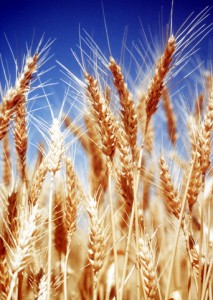Facts About Whole Grains
 In the past whole grains were mostly used to provide fiber and promote digestive health. But recent studies show that whole grains provide much more, including additional vitamins and minerals, plus high levels of antioxidants and other healthy plant-based nutrients. Some whole grains even provide a decent amount of protein.
In the past whole grains were mostly used to provide fiber and promote digestive health. But recent studies show that whole grains provide much more, including additional vitamins and minerals, plus high levels of antioxidants and other healthy plant-based nutrients. Some whole grains even provide a decent amount of protein.
Whole grains may help reduce the risk of heart disease, cancer and diabetes. They also lower triglyceride levels, improve insulin control, help with weight management and slow the build-up of plaque in arteries (thanks to the fiber).
The American Dietetic Association recommends you consume 20-35 grams of fiber daily, and aim for at least half of this to come from whole grains. A proper serving size consists of about ½ cup of cooked grain.
Even if you eat a gluten-free diet, you can still enjoy whole grains. Look for the “below to see which of these whole grains are gluten-free.
Amaranth
Barley
Brown rice
Bulgur (cracked wheat)
Whole-wheat pasta or couscous
Flaxseed
Millet
Oats (many varieties!)
Quinoa (pronounced KEEN-wah)
Rye
Spelt
Wheat berries
Wild rice
Triticale
Buckwheat
Corn
Sorghum
Source: American Dietetic Association at eatright.org

